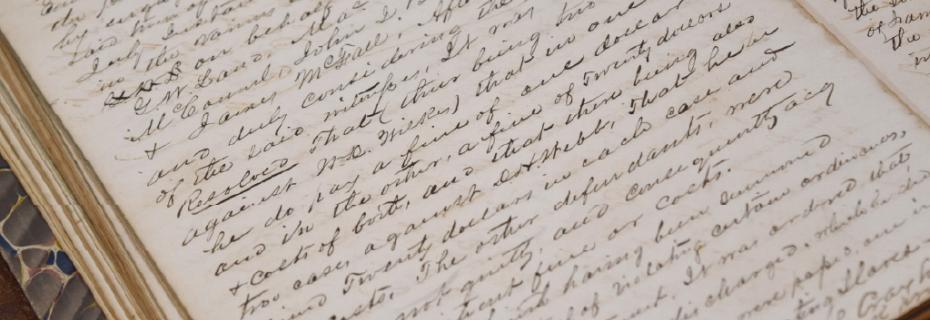Visit
 The Official Web Site of the State of South Carolina
The Official Web Site of the State of South Carolina

Do you have old letters, recipe books, or other documents? Do you ever struggle to read the handwritten notes? Today at the Anderson County Museum, we’re sharing a few tips for reading historical documents and transcribing handwritten letters and texts.
When transcribing, make sure you protect the original to the best of your ability. If you do not have gloves available, at least wash your hands and dry them fully before handling the piece. Avoid touching the ink and store your originals in a cool, dry place away from light and pests. We also encourage purchasing acid free or archival quality storage materials.
Becoming familiar with the individual’s handwriting is one of the most important parts of this process. Before you start to actually transcribe, it helps to read through at least a few paragraphs. This will allow you to locate patterns in the handwriting and understand the subject matter to give you direction in the event you are stumped by a word or phrase.
It is easy to invest lots of time in trying to decipher one difficult word. Instead of getting bogged down, try moving past the word and returning to it after becoming more familiar with the writer’s style and the body of the text as a whole. This may help you realize if a word has been hyphenated or continued on a different page as well.
You can use words you have already confidently deciphered to match letter shapes in other words. This may give you enough information to infer the remainder of an otherwise indistinguishable word.
Many writers used to combine certain letters, especially pairs of letters, into one character that may or may not resemble the original letters. For instance, you may see a character that looks like a lower case “f” that is actually an “s” or a double “s.” These characters are easier to spot the more you become familiar with an individual’s handwriting.
Writers in the past, just like today, had differing levels of education. This means that you should be aware of the possibility of misspelled words, grammatical errors, and even phonetic spellings that reflect different accents and dialects.
Sometimes spellings are not incorrect, they are just different. Consider “labor” vs. “labour.” Some of these spellings and even words themselves might be specific regionally specific. There are also many words that have fallen out of popular use or whose meanings have changed over the centuries. A simple google search can usually help shed light on these words and their historic meanings.
If you find yourself bogged down on a particular word or phrase, step away for a while. Our minds can occasionally get locked into a framework that can be relaxed when you turn your attention to something new and return with fresh eyes.
Again, fresh eyes are usually an advantage. Feel free to ask a friend for help in deciphering a tough word. Different people have different experiences with reading script so it is possible that a word you struggle with might jump out to them. Plus, they can check work you’ve already done.
The goal is always to fully transcribe a piece. However, it is unrealistic to think that this is always possible. Some handwriting is so poor that certain words will be downright impossible to read, and that is ok. It is also not uncommon for sections of a document to be missing especially if they have been damaged by water, light, insects, or rodents. This is why proper storage is so important.
Most importantly, have fun!